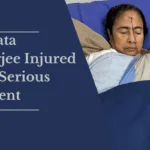A team led by former President Ram Nath Kovind has presented a report on the government’s idea of having ‘One Nation, One Election’. This concept suggests holding Lok Sabha and Assembly elections simultaneously.
The team, formed in September, extensively researched global practices and consulted with 39 political parties, economists, and the Election Commission of India. They endorse the idea but stress the need for a legally sound method to adjust existing election cycles.
The report, submitted to President Droupadi Murmu, states that holding simultaneous elections is the unanimous recommendation of the committee. It suggests conducting Lok Sabha and Assembly elections together, followed by synchronized local body elections 100 days later.
The ‘One Nation, One Election’ proposal was part of the BJP’s agenda in 2019 but has faced criticism from opposition parties due to concerns about constitutional issues.
What is ‘One Nation, One Election’?
In India, most states hold their elections for local and national representatives in different years. However, some states like Andhra Pradesh, Sikkim, and Odisha vote for both their state and central representatives during the Lok Sabha elections, which usually happen in April or May.
This year, Maharashtra, Haryana, and Jharkhand will vote separately for their state representatives, while Jammu and Kashmir must hold its first Assembly election in six years by September 30, as per a recent Supreme Court order.
Other states like Karnataka, Madhya Pradesh, Rajasthan, and Telangana have their own election schedules, which don’t coincide with the national elections.
Syncing these election cycles poses numerous challenges due to logistical, financial, and constitutional reasons, considering India’s vast size and diverse cultural landscape.
Why is the Government Advocating for ‘One Nation, One Election’?
Before the Ram Nath Kovind-led panel was announced last year, Union Law Minister Arjun Ram Meghwal explained why the government thinks having simultaneous elections is a good idea and mentioned some possible challenges.
Meghwal said that having elections at the same time saves money because we don’t need to deploy poll officials and security forces multiple times each year. It also reduces the amount of money spent by the government and political parties on campaigning.
He also mentioned that having staggered elections means that the Code of Conduct is in effect frequently, which can delay the implementation of welfare schemes, whether they’re from the central government or a state.
The government also believes that having elections all at once will increase voter turnout, which currently varies a lot from state to state and even for the general election.
‘One Nation, One Election’ Implementation
To make this change happen, we need to amend the Constitution and have all states, territories, and major political parties agree to it. Legal experts are concerned that without this amendment, our proposal could be seen as going against India’s system of government.
The key parts we need to change are Article 83 (which deals with how long Parliament lasts), Article 85 (which talks about when the Lok Sabha can be dissolved), Article 172 (about how long state legislatures last), Article 174 (which discusses when state legislatures can be dissolved), and Article 356 (which covers the imposition of President’s Rule).
These are important because we need a plan for what happens if a state or the central government loses a no-confidence vote or is dissolved before its term ends.
It’s not possible to simply tell other states to hold new elections.
‘One Nation, One Election’ Poll Panel’s 2015 Report
Nine years ago, the Election Commission of India (ECI) put forward a report discussing the concept of ‘One Nation, One Election.’ They proposed that if a no-confidence motion passes, a new Chief Minister or Prime Minister should be nominated to take over immediately. This new leader would then face an immediate test. Additionally, in the event of an early dissolution, a short-term election should be held to choose a government for the remaining term.
The report also suggested various measures like adjusting term lengths to align electoral cycles. However, these proposals faced criticism from opposition parties.
Bengal Chief Minister Mamata Banerjee strongly opposed the idea, calling it an attempt to undermine the Constitution and introduce autocracy in a democratic guise.
Similarly, Tamil Nadu Chief Minister MK Stalin criticized it, labeling it as a threat to democratic decentralization and impractical.
The Aam Aadmi Party (AAP), led by Arvind Kejriwal, also rejected the proposal, arguing that it would harm parliamentary democracy and the Constitution’s fundamental principles.
The Congress party condemned it as undemocratic, with its leader Mallikarjun Kharge questioning the government’s reasoning behind it.
However, not all opposition parties disagreed. In Jammu and Kashmir, the National Conference, Peoples Democratic Party, and local Congress unit supported the idea of ‘One Nation, One Election’ for the union territory.
It’s worth noting that simultaneous elections were common in India until 1967, but their frequency decreased due to premature dissolution of some state legislatures.
‘One Nation, One Election’ Challenges
Ensuring smooth coordination between electoral cycles while maintaining governance continuity remains a challenge, especially regarding managing breaks caused by House dissolution, President’s Rule, or hung Assemblies/Parliaments.
Additionally, regional parties struggle to highlight local issues effectively due to limited resources, especially when competing with well-funded parties during Lok Sabha elections.
Another issue arises from the recurring expense of acquiring electronic voting machines (EVMs), estimated at nearly ₹10,000 crore every 15 years, as indicated by the election commission.
Public Opinion on ‘One Nation, One Election’
The committee overseeing the ‘One Nation, One Election’ initiative gathered around 21,000 recommendations from the general public. According to the PTI news agency’s report in January, more than 81 percent of these suggestions supported the idea.
| Also Read: |
|---|
| Nayab Singh Saini To Be New Haryana Chief Minister After ML Khattar Resignation |
| Manohar Lal Khattar Resigns as Haryana Chief Minister Amid BJP-JJP Crises |
‘One Nation, One Election’ FAQs
Q.1. What is ‘One Nation, One Election’?
Ans. ‘One Nation, One Election’ proposes holding Lok Sabha and Assembly elections simultaneously to streamline the electoral process in India.
Q.2. Why is the government advocating for it?
Ans. The government believes synchronized elections save money, reduce campaign costs, and improve voter turnout, enhancing governance efficiency.
Q.3. How would ‘One Nation, One Election’ be implemented?
Ans. Implementation requires constitutional amendments and consensus among states and political parties, posing logistical and legal challenges.
Q.4. What are the main challenges of ‘One Nation, One Election’?
Ans. Challenges include maintaining governance continuity, managing regional issues, and the recurring expense of electronic voting machines.
Q.5. What is the public opinion on ‘One Nation, One Election’?
Ans. Over 81% of around 21,000 public recommendations supported the initiative, emphasizing widespread interest and potential for reform.







